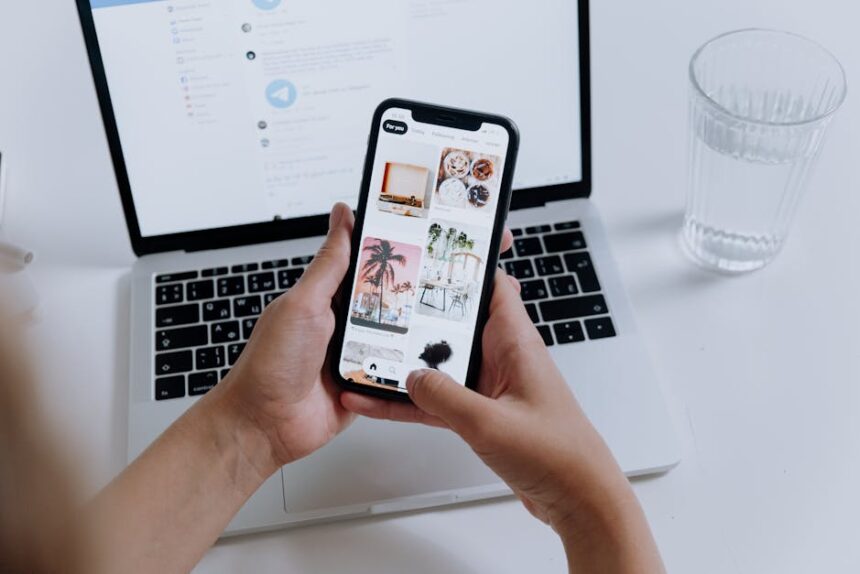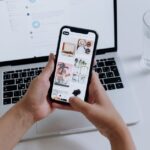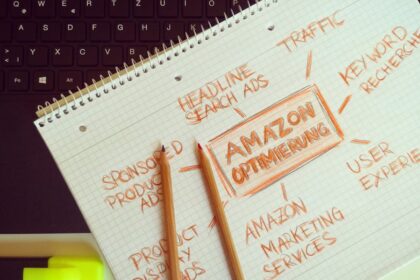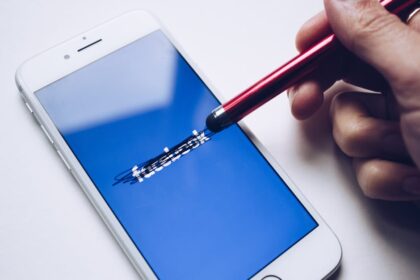From Cold To Customer: Optimizing Your Facebook Ad Funnel
Optimizing a Facebook ad funnel from cold traffic to a loyal customer is a complex, multi-layered process demanding strategic foresight, meticulous execution, and continuous iteration. It’s far more than just setting up a few ads; it’s about understanding the customer journey, aligning your messaging with each stage, and leveraging Facebook’s sophisticated targeting and optimization capabilities to maximize return on ad spend (ROAS). The journey typically encompasses distinct phases: Awareness (Cold Audience), Consideration (Warm Audience), Conversion (Hot Audience), and finally, Retention/Advocacy (Customer). Each phase necessitates a unique approach to targeting, creative development, ad copy, and campaign objectives, all interconnected by robust data tracking and analysis.
The Foundational Layer: Understanding the Full-Funnel Ecosystem
Before diving into specific stages, it’s critical to grasp the overarching philosophy of a full-funnel approach. This isn’t a linear path where users simply move from A to B; it’s a dynamic ecosystem where users can enter or exit at various points, and your ads need to be prepared to engage them wherever they are. A successful full-funnel strategy recognizes that not every prospect is ready to buy immediately. Instead, it nurtures leads through a series of touchpoints, building trust, demonstrating value, and addressing objections over time. This systematic approach minimizes wasted ad spend on unqualified prospects and maximizes the efficiency of conversion-focused campaigns by only showing high-intent offers to those who have demonstrated genuine interest. A key tenet is the understanding that different campaign objectives serve different purposes: brand awareness for reach, traffic for engagement, lead generation for data capture, and conversions for direct sales. Blending these objectives intelligently across the funnel stages is paramount. Furthermore, robust Facebook Pixel implementation and meticulous event tracking are non-negotiable prerequisites. The Pixel acts as your eyes and ears, gathering invaluable data on user behavior, enabling precise retargeting, and powering Facebook’s machine learning algorithms to find more high-value prospects. Custom conversions, standard events, and even offline event sets should be configured to provide a holistic view of the customer journey, allowing for more accurate attribution and smarter optimization decisions. The advent of iOS 14.5+ and privacy changes has emphasized the importance of server-side tracking (Conversions API) to supplement browser-side data, ensuring data integrity and continued optimization capabilities despite platform limitations. Ignoring these foundational elements severely hampers any optimization efforts, rendering data-driven decisions almost impossible.
Stage 1: Engaging the Cold Audience (Awareness & Discovery)
The initial stage of your Facebook ad funnel focuses on introducing your brand, product, or service to an entirely new, unacquainted audience. The goal here is not immediate sales, but rather to generate awareness, pique interest, and efficiently expand your top-of-funnel (TOFU) reach. This is where you cast a wide yet targeted net, aiming to capture the attention of individuals who fit your ideal customer profile but are currently unaware of your solution.
Targeting Strategies for Cold Audiences:
- Lookalike Audiences: These are often the most powerful and scalable cold audience targeting option. Based on your existing high-value customers (e.g., purchasers, top 5% website visitors, email list subscribers), Facebook’s algorithm identifies users with similar demographic, interest, and behavioral characteristics. The quality of your seed audience directly impacts the effectiveness of your lookalikes. Start with 1% lookalikes for highest similarity, then test 2-5% or even 5-10% for broader reach if performance holds. Regularly refresh these audiences as your customer base evolves.
- Interest-Based Targeting: This involves selecting specific interests, behaviors, or demographic attributes that align with your ideal customer. Think broadly about what your target audience consumes, where they spend time online, and what their aspirations or pain points might be. Layering multiple interests can refine your audience, but be cautious not to make it too narrow, which can limit reach and increase costs. Leverage Facebook’s “Suggestions” feature after inputting initial interests to uncover related categories. Broad match interests often outperform highly niche ones, especially with Advantage+ Campaign Budget Optimization (CBO) and good creative.
- Broad Targeting: In certain scenarios, particularly with high budgets and proven creative, simply targeting by age, gender, and location, allowing Facebook’s Advantage+ algorithms to find the right audience, can be highly effective. This strategy relies heavily on the power of your creative and landing page to qualify users, and Facebook’s advanced machine learning to identify purchase intent signals. It often works best for products with mass appeal or when you have robust pixel data indicating strong in-platform signals.
- Demographic Targeting: Basic demographics like age, gender, language, and geographic location are essential starting points. Ensure these align with your product’s primary market. For B2B, consider workplace, job title, or industry.
Creative & Copy for Cold Audiences:
The primary objective for cold audiences is to stop the scroll and provide initial value or intrigue.
- Creative Types:
- Short-form Video: Highly engaging, capable of conveying a lot of information quickly, and excellent for demonstrating product benefits or telling a compelling story. Aim for videos under 30 seconds for initial engagement, focusing on a strong hook within the first 3-5 seconds. Educational or problem-solution videos work well.
- High-Quality Imagery/Carousels: Visually appealing static images or carousel ads that highlight key product features, benefits, or lifestyle aspirations. Consider user-generated content (UGC) or visually striking graphics.
- GIFs/Animated Graphics: A middle ground between static images and full videos, capable of capturing attention with movement.
- Ad Copy:
- Problem-Aware/Benefit-Driven: Focus on a major pain point your audience experiences and position your product as the clear, compelling solution. Highlight core benefits, not just features.
- Intrigue & Curiosity: Use questions or bold statements to spark curiosity and encourage further exploration.
- Educational/Informative: For complex products, provide a high-level overview of what you offer and why it matters.
- Short & Punchy: Keep initial copy concise, compelling, and easy to digest. The goal is to get them to click “See More” or visit your landing page.
- Clear Call-to-Value (CTV): Instead of a hard sell, the call to action should encourage learning more, watching a video, or exploring a resource. Examples: “Learn More,” “Watch Video,” “Discover How.”
Campaign Objectives for Cold Audiences:
- Brand Awareness: Maximizes reach and impressions among your target audience, ideal for new brands or launching new products.
- Reach: Shows your ad to the maximum number of people in your audience, often at a lower cost per impression. Useful for ensuring your message is seen widely.
- Video Views: Optimizes for users most likely to watch your video, perfect for building video viewer custom audiences for retargeting.
- Engagement: Optimizes for likes, comments, shares, and post reactions, indicating a level of interest that can also form a retargeting audience.
- Traffic: Directs users to a landing page or website, often used as a gateway to gather pixel data for subsequent retargeting. While it drives clicks, it doesn’t optimize for post-click actions.
- Conversions (View Content): If you have a significant amount of content on your site, you could optimize for “View Content” as a micro-conversion, indicating a deeper level of engagement than just a simple page view. This leverages Facebook’s ability to find users likely to consume content.
Budget Allocation for Cold Traffic:
Allocate a significant portion of your ad budget (often 40-60%) to cold audience campaigns. This ensures a consistent influx of new, qualified prospects into your funnel. Think of it as investing in future growth. High-quality cold traffic campaigns lay the groundwork for efficient retargeting and ultimately, higher conversion rates downstream. Continuously refresh your cold audience targeting and creatives to avoid ad fatigue and ensure sustained performance. Monitor metrics like Cost Per Mille (CPM), Reach, Frequency, and Outbound Click-Through Rate (CTR) to gauge efficiency and initial engagement. A high CPM could indicate an overly saturated or competitive audience, prompting a need for broader targeting or fresh creative. Low CTR might suggest your creative isn’t resonating or your targeting is off.
Stage 2: Nurturing the Warm Audience (Consideration)
Once a cold prospect has engaged with your brand – perhaps by watching a video, visiting your website, or interacting with a post – they transition into a “warm” audience. This segment is characterized by a demonstrated level of interest, making them significantly more valuable than cold traffic. The objective here shifts from mere awareness to fostering consideration, building trust, and moving them closer to a conversion.
Retargeting Pools for Warm Audiences:
This stage heavily relies on custom audiences built from various engagement signals.
- Website Visitors: Segment website visitors based on their activity.
- All Website Visitors (e.g., last 30-90 days): A broad audience who has shown some interest.
- Specific Page Viewers: Target users who visited product pages, blog posts, or landing pages but didn’t convert. This allows for highly relevant messaging. For instance, if they viewed a specific product, show them ads for that product or related items.
- Time Spent on Site: Create audiences of users who spent the top 25%, 10%, or 5% of time on your website. These are highly engaged individuals.
- Video Viewers: Create audiences of people who watched a certain percentage of your videos (e.g., 25%, 50%, 75%, 95%). A user who watched 75% of a 2-minute product demo video is highly engaged.
- Engagement Audiences:
- Facebook Page Engagers: People who liked, commented, shared, or interacted with your Facebook page posts or ads.
- Instagram Profile Engagers: Similar interactions on your Instagram profile.
- Lead Form Openers/Completers (but not converted): People who opened or completed a lead form but didn’t proceed to the next conversion step (if applicable).
- Event Attendees/Responders: Users who showed interest in or attended a Facebook event.
- Customer Lists (for specific use cases): While primarily used for lookalikes, a customer list can also be used to exclude existing customers from consideration campaigns or to re-engage past dormant customers with specific offers.
- Value-Based Audiences: If you’re tracking purchase value, you can create lookalikes from your highest-value customers to find more similar high-value prospects, or exclude low-value customers from certain retargeting campaigns.
Offer Types for Warm Audiences:
The offers here are typically low-commitment, high-value resources designed to educate, build trust, and gather contact information.
- Lead Magnets: Ebooks, whitepapers, checklists, templates, case studies, exclusive guides, or free tools. These provide tangible value in exchange for an email address.
- Webinars/Online Workshops: Positioned as educational events that solve a specific problem or teach a valuable skill, directly related to your product or service.
- Free Trials/Demos: For SaaS or service-based businesses, a no-obligation trial or personalized demo is an excellent way to get users to experience your solution firsthand.
- Content Series: A sequence of educational blog posts, videos, or email series that deepens their understanding of the problem and your solution.
- Quizzes/Assessments: Engaging tools that help users self-identify their needs, providing valuable data for your business while offering a personalized recommendation.
Creative & Copy for Warm Audiences:
The messaging for warm audiences should pivot from awareness to education, solution-orientation, and addressing potential objections.
- Creative Types:
- Educational Videos: Longer-form videos that dive deeper into product features, benefits, or how-to guides.
- Testimonials/Case Studies: Social proof is powerful. Show real customers achieving real results. Video testimonials are especially effective.
- Problem-Solution Demos: Illustrate how your product directly solves the pain points you highlighted in cold ads.
- Infographics/Data Visualizations: For complex information, presenting it clearly and concisely can be highly effective.
- Behind-the-Scenes/Brand Story: Builds connection and trust by humanizing your brand.
- Ad Copy:
- Solution-Oriented: Directly address the pain points identified by the cold audience and elaborate on how your product provides the answer.
- Value Proposition Clarity: Clearly articulate the unique benefits and how your solution stands out from competitors.
- Addressing Common Objections: Pre-emptively answer questions or concerns they might have (e.g., “Is it affordable?”, “Is it easy to use?”).
- Social Proof Integration: Weave in statistics, testimonials, or endorsements.
- Clear Call-to-Action (CTA): Guide them towards the next step – “Download Your Guide,” “Register for the Webinar,” “Start Your Free Trial,” “Learn More.” Use action-oriented language.
- Mid-Length Copy: You have more leeway for longer copy here, but ensure it remains engaging and scannable with bullet points and clear paragraphs.
Campaign Objectives for Warm Audiences:
- Traffic: To drive users to your lead magnet landing pages, webinar registration pages, or detailed product information.
- Lead Generation: Utilizes Facebook’s native lead forms, which can be highly effective for collecting contact information quickly without requiring users to leave Facebook. This reduces friction and can increase conversion rates for lead magnets.
- Conversions (Specific Events): Optimize for micro-conversions like “Lead,” “Complete Registration,” “Initiate Checkout” (if applicable to your funnel stage). This tells Facebook to find users most likely to complete these specific actions.
- Messages: If your business benefits from direct interaction (e.g., service-based, high-ticket items), encourage users to start a Messenger conversation for personalized assistance.
Budget Allocation for Warm Traffic:
Allocate a significant portion of your remaining budget (e.g., 25-40%) to warm audience campaigns. These audiences have already expressed interest, so the cost per lead or micro-conversion is typically lower than for cold traffic. Focus on optimizing for Cost Per Lead (CPL) or Cost Per Micro-Conversion. Monitor your conversion rates from lead to next stage to ensure the quality of your leads. If CPL is high but lead quality is low, re-evaluate your offer, creative, or targeting. If CPL is low and quality is high, scale your efforts here.
Stage 3: Converting the Hot Audience (Conversion)
This is the make-or-break stage, focusing on prospects who are on the brink of making a purchase or taking a high-value action. They’ve demonstrated strong intent, perhaps by adding items to their cart, viewing specific product pages multiple times, or engaging deeply with your content. The goal here is to push them over the finish line.
Retargeting Pools for Hot Audiences:
These audiences are the most valuable within your funnel due to their proximity to conversion.
- Cart Abandoners: The golden standard for e-commerce. Target users who added items to their cart but didn’t complete the purchase. This is a highly motivated segment.
- Initiated Checkout (but not purchased): Even more specific than cart abandoners, these users provided some details during checkout but didn’t complete the transaction.
- Specific Product Page Viewers (multiple times or recently): Users who viewed specific product pages repeatedly or very recently, indicating strong interest in those particular items.
- Lead Magnet Downloaders (who haven’t purchased): For businesses with longer sales cycles, target users who consumed a lead magnet but haven’t yet become a customer. These need a direct, high-value offer.
- High-Intent Website Visitors: Define custom audiences based on specific combinations of pages visited or events fired (e.g., visited X product page AND spent Y minutes on site).
- Engaged Leads (from Stage 2): If you generated leads in Stage 2, target those leads who opened specific emails, clicked certain links, or engaged with further nurturing content.
Offer Types for Hot Audiences:
The offers at this stage are direct, compelling, and often include incentives to reduce friction or create urgency.
- Direct Purchase/Sign-Up: The primary offer.
- Limited-Time Discounts/Promotions: A classic conversion driver. Make the scarcity genuine and clear.
- Free Shipping/Bonus Items: Reduces the perceived cost or adds extra value.
- Bundle Offers: Encourages a higher average order value (AOV).
- Risk Reversal: Guarantees, liberal return policies, or free consultations to alleviate buyer apprehension.
- Last Chance Offers: For cart abandoners, remind them what they left behind and provide a final incentive.
- Personalized Recommendations: Dynamic Product Ads (DPAs) are exceptionally powerful here, showing users the exact products they viewed or added to their cart.
Creative & Copy for Hot Audiences:
Messaging for hot audiences should be persuasive, action-oriented, and address any lingering doubts.
- Creative Types:
- Dynamic Product Ads (DPAs): Essential for e-commerce. Automatically show users the specific products they viewed or added to cart, complete with pricing and availability.
- Product-Focused Imagery/Video: High-quality visuals of the product in use, highlighting key features or benefits relevant to solving their specific problem.
- Customer Testimonials/Reviews (specific to product): Highlight positive feedback related to the exact product they’re considering.
- Urgency/Scarcity Visuals: Countdown timers, limited stock indicators (if true).
- Benefit-Centric Visuals: Emphasize the transformation or positive outcome the customer will experience.
- Ad Copy:
- Strong, Direct Call-to-Action (CTA): “Shop Now,” “Buy Now,” “Complete Your Order,” “Claim Your Discount,” “Get Started Today.” Make it unmistakable.
- Urgency & Scarcity: “Limited Stock,” “Offer Ends Soon,” “Don’t Miss Out,” “Your Cart Expires.”
- Benefit Reinforcement: Reiterate the top 1-2 benefits that resonate most with a potential buyer.
- Objection Handling: Address final objections like price, quality, or fit. “Free returns,” “24/7 support,” “Built to last,” “See why X customers love it.”
- Social Proof Reinforcement: “Join thousands of satisfied customers,” “Rated 5 stars.”
- Concise & Punchy: Get straight to the point. These users are already warm; they need a final push, not a lengthy sales pitch.
- Personalization (via DPA text): Leverage dynamic text to reference the specific product they viewed.
Campaign Objectives for Hot Audiences:
- Conversions (Purchase): The primary objective. Optimize directly for the “Purchase” event (or equivalent high-value conversion for lead generation businesses, e.g., “Qualified Lead,” “Booking”).
- Catalog Sales: Specifically for e-commerce, this objective is designed to run Dynamic Product Ads from your product catalog.
Budget Allocation for Hot Traffic:
While these audiences are smaller, they are the most valuable. Allocate a significant portion of your budget (e.g., 20-30%) to these campaigns, potentially higher if your cold and warm audiences are robustly feeding them. The Cost Per Acquisition (CPA) for these campaigns should be the lowest within your funnel, and ROAS the highest. Monitor CPA, Purchase Conversion Rate, and ROAS meticulously. If performance lags, revisit the offer, creative, or landing page experience. Consider implementing an exclusion strategy to prevent showing purchase-intent ads to recent buyers, saving budget and preventing annoyance.
Stage 4: Cultivating Customer Loyalty (Retention & Advocacy)
The customer journey doesn’t end with a purchase. In fact, acquiring a new customer is often more expensive than retaining an existing one. This final stage of the funnel focuses on maximizing Customer Lifetime Value (CLTV) through repeat purchases, upselling, cross-selling, and transforming customers into brand advocates.
Targeting for Customer Retention & Advocacy:
This involves segmenting your existing customer base based on their purchase history, engagement, and potential for future value.
- Existing Customers (excluding recent purchasers): Create custom audiences of all purchasers, then exclude recent purchasers (e.g., last 7-30 days) from promotional ads to avoid immediately pushing new offers.
- Loyal Customers/High Spenders: Target customers who have made multiple purchases or spent above a certain threshold for exclusive offers or loyalty programs.
- Customers of Specific Products: If they bought Product A, target them with ads for complementary Product B.
- Dormant Customers: Target customers who haven’t purchased in a while (e.g., 90+ days) with re-engagement campaigns or special “welcome back” offers.
- Email List Subscribers (Customers): Segmented lists from your CRM can be uploaded and targeted on Facebook for specific campaigns.
Offer Types for Customer Retention & Advocacy:
These offers aim to provide continued value, introduce new products, or reward loyalty.
- Upsell/Cross-sell: Promote higher-tier products, upgrades, or complementary items to what they’ve already purchased.
- Subscription Renewals/Upgrades: For recurring revenue models.
- Loyalty Programs/Exclusive Discounts: Reward loyal customers with special access or pricing.
- Referral Programs: Incentivize customers to refer new clients, turning them into advocates.
- Request for Reviews/UGC: Encourage satisfied customers to leave reviews or create user-generated content, which can then be leveraged in cold and warm campaigns.
- Content That Enhances Product Use: Tutorials, tips, advanced guides that help customers get more value from their purchase, increasing satisfaction and reducing churn.
- New Product Announcements/Early Access: Make existing customers feel valued by giving them first dibs on new releases.
Creative & Copy for Customer Retention & Advocacy:
The tone here should be appreciative, helpful, and focused on continued value.
- Creative Types:
- Customer Testimonials/UGC: Reinforce their good decision by showing others benefiting.
- Product Lifestyle Imagery: Show the product integrated into a broader lifestyle, inspiring further purchases.
- “How-To” Videos/Tutorials: For cross-selling or improving product usage.
- Behind-the-Scenes/Company Updates: Builds community and brand loyalty.
- New Product Showcases: Highlight new additions that align with their past purchases.
- Ad Copy:
- Appreciation & Value: “Thank you for being a valued customer,” “Unlock even more value.”
- Benefit-Oriented (Next Level): How the new product or upgrade will further enhance their experience or solve a new problem.
- Exclusivity/VIP Status: “As a loyal customer, you get…”
- Call for Action (Review/Refer): “Share your experience,” “Refer a friend, get a reward.”
- Re-engagement Focus: For dormant customers, “We miss you!” with a compelling reason to return.
- Personalization: If possible, reference past purchases or specific products.
Campaign Objectives for Customer Retention & Advocacy:
- Conversions (Repeat Purchase): Optimize for additional purchases.
- Engagement: For building community, gathering reviews, or driving engagement with loyalty programs.
- Messages: For direct customer support or personalized upselling conversations.
- Reach: To ensure all loyal customers see important announcements or exclusive offers.
Budget Allocation for Customer Retention & Advocacy:
While often a smaller slice of the overall budget (e.g., 5-15%), the ROAS from these campaigns can be exceptionally high due to the pre-existing trust and relationship. This investment is crucial for long-term business health and profitability. Monitor Customer Lifetime Value (CLTV), Repeat Purchase Rate, and Referral Rate as key metrics.
Cross-Cutting Elements for Funnel Optimization
Beyond the distinct stages, several overarching strategies and technical considerations are vital for continuous optimization across your entire Facebook ad funnel.
A/B Testing (Split Testing):
A/B testing is not an option; it’s a fundamental requirement. Every element of your campaign should be tested systematically.
- Audiences: Test different lookalike percentages, interest combinations, or custom audience definitions against each other within the same funnel stage.
- Creatives: Test various images, videos, carousel sequences, and dynamic creative variations. Small tweaks to the hook or call-to-action in a video can have significant impact.
- Ad Copy: Experiment with headlines, primary text, descriptions, and calls-to-action. Test long vs. short copy, benefit-driven vs. problem-solution, and different tones of voice.
- Offers: Test different discounts, bundles, freebies, or lead magnet types. A 10% discount might outperform free shipping, or vice-versa.
- Landing Pages: Test different headlines, calls-to-action, layout, images, and content on your landing pages. Even a slight improvement in conversion rate on your landing page dramatically improves ad funnel efficiency.
- Bid Strategies & Optimization Goals: Experiment with lowest cost, cost cap, or bid cap, and different optimization events (e.g., Link Clicks vs. Landing Page Views vs. View Content for top-of-funnel).
Conduct one test at a time to isolate variables effectively. Use Facebook’s built-in A/B test feature or manually create duplicate ad sets for comparison. Ensure statistical significance before drawing conclusions.
Facebook Pixel Implementation & Event Tracking:
This cannot be overstated. A flawlessly implemented Pixel and Conversions API setup is the backbone of all optimization.
- Standard Events: Ensure all relevant standard events (PageView, ViewContent, AddToCart, InitiateCheckout, Purchase, Lead, CompleteRegistration, etc.) are firing correctly and passing relevant parameters (value, currency, content_ids).
- Custom Conversions: Create custom conversions for specific, non-standard actions important to your funnel (e.g., “watched 75% of demo video,” “visited pricing page”).
- Custom Events: For highly granular tracking beyond standard events.
- Conversions API (CAPI): Implement CAPI to send server-side events directly to Facebook, circumventing browser-based tracking limitations from ad blockers and iOS 14+ privacy changes. This ensures data fidelity for attribution and optimization. It’s not a replacement for the pixel, but a critical complement.
- Event Match Quality: Monitor your Event Match Quality score in Events Manager. Higher quality means more accurate audience matching and better optimization. Implement customer information parameters (email, phone, name, city, etc.) when sending events via CAPI.
Attribution Models:
Understand how Facebook attributes conversions. The default attribution window is typically 7-day click and 1-day view. This means a conversion is attributed if someone clicked your ad within 7 days or viewed it within 1 day of converting. While useful for in-platform reporting, consider how this fits into your broader marketing analytics framework. Tools like Google Analytics or your CRM might use different attribution models (e.g., last-click, linear, time decay). Discrepancies are normal, but understanding them is key to making informed decisions about budget allocation across channels. For full-funnel analysis, Facebook’s Attribution tool (formerly Facebook Analytics) provides a cross-channel, multi-touch perspective.
Budgeting & Scaling Strategies:
- Campaign Budget Optimization (CBO) / Advantage+ Campaign Budget: Utilize CBO or the newer Advantage+ Campaign Budget to allow Facebook to dynamically allocate budget to the best-performing ad sets within a campaign. This is especially effective across different funnel stages if combined into one campaign, though typically each funnel stage has its own campaign.
- Gradual Scaling: Avoid drastic budget increases (e.g., more than 15-20% per day) to prevent disrupting Facebook’s optimization algorithms. Gradual, incremental increases are safer.
- Horizontal Scaling: Create new ad sets with different targeting (new lookalikes, new interest combinations) or new creatives to expand reach rather than just increasing budget on existing campaigns.
- Vertical Scaling: Increase budget on well-performing ad sets.
- Testing New Ad Accounts: For very large advertisers, exploring additional ad accounts can sometimes provide more scaling headroom or diversify risk.
Ad Account Structure:
Organize your ad account logically. A common and effective structure mirrors the funnel stages:
- Campaign 1: Awareness (Cold Audiences)
- Ad Set 1.1: Lookalike 1%
- Ad Set 1.2: Lookalike 1-3%
- Ad Set 1.3: Broad Interests
- …
- Campaign 2: Consideration (Warm Audiences)
- Ad Set 2.1: Website Visitors (30 days)
- Ad Set 2.2: Video Viewers (75%)
- Ad Set 2.3: Engaged Page Visitors
- …
- Campaign 3: Conversion (Hot Audiences)
- Ad Set 3.1: Cart Abandoners (3 days)
- Ad Set 3.2: Product Page Viewers (7 days)
- Ad Set 3.3: Initiated Checkout
- …
- Campaign 4: Retention (Customers)
- Ad Set 4.1: Past Purchasers (60-180 days)
- Ad Set 4.2: High-Value Customers
- …
This clear structure makes reporting, optimization, and troubleshooting much easier.
Creative Strategy Evolution:
Your creative assets must evolve as users move down the funnel.
- Cold: Attention-grabbing, curiosity-inducing, broad appeal. Focus on problem/solution.
- Warm: Educational, trust-building, value-driven. Address needs, showcase benefits in more detail. Use testimonials or case studies.
- Hot: Direct, action-oriented, urgency-driven. Focus on product specifics, overcome final objections, strong CTAs. Show exact product.
- Customer: Appreciative, loyalty-focused, cross-sell/upsell, community building.
Regularly refresh creatives to combat ad fatigue, especially for warm and hot audiences who see your ads more frequently. Dynamic Creative is a powerful tool to automate combinations of headlines, primary text, images, and videos.
Copywriting Principles Across Stages:
- Problem-Agitate-Solve (PAS): Excellent for cold audiences. Identify a problem, agitate the pain it causes, then present your solution.
- Attention-Interest-Desire-Action (AIDA): More general but effective. Capture attention, build interest, create desire, drive action. Applicable across stages, with the emphasis shifting per stage.
- Benefit vs. Feature: Always highlight benefits (what the product does for the customer) over features (what the product is). Features tell, benefits sell.
- Clarity and Conciseness: Especially crucial for cold traffic. Get to the point quickly.
- Storytelling: Can be incredibly powerful, especially in warm stages, to build connection and emotional resonance.
- Urgency & Scarcity: Use sparingly and genuinely for hot audiences. False urgency erodes trust.
Landing Page Optimization (LPO):
Your landing page is an extension of your ad. A poorly optimized landing page will tank even the best ad campaign.
- Message Match: The landing page headline and content must align perfectly with the ad copy and creative.
- Clear Value Proposition: What’s in it for them? Clearly state the benefits.
- Single, Clear CTA: Make it obvious what you want the user to do next.
- Mobile Responsiveness & Speed: Crucial for Facebook traffic.
- Trust Signals: Testimonials, security badges, money-back guarantees.
- Minimal Distractions: Remove unnecessary navigation or links.
- Form Optimization: For lead generation, keep forms short, ask only for essential information, and clearly state what happens after submission.
CRM Integration:
Connecting your Facebook Ads data with your CRM allows for a much richer understanding of customer journey and CLTV.
- Offline Conversions: Upload offline sales data to Facebook to inform optimization and audience building (e.g., lookalikes from in-store purchasers).
- Audience Synchronization: Automatically sync customer lists from your CRM to Facebook custom audiences for retargeting or exclusion.
- Lead Nurturing: Ensure leads captured via Facebook Lead Ads are seamlessly pushed into your CRM and email marketing sequences for immediate follow-up.
Reporting and Analytics:
Consistent, in-depth analysis is crucial.
- Key Metrics by Stage:
- Cold: CPM, CTR (Outbound), Video View % (25%, 50%, 75%), Engagement Rate, Reach, Frequency.
- Warm: CTR, Cost Per Landing Page View, Cost Per Lead, Lead Conversion Rate, Quality of Leads.
- Hot: CPA, ROAS, Purchase Conversion Rate, AOV.
- Customer: Repeat Purchase Rate, CLTV, Referral Rate.
- Custom Columns: Create custom columns in Ads Manager to easily track the most important metrics for your business.
- Breakdowns: Analyze performance by age, gender, placement, region, time of day to identify optimization opportunities.
- Trend Analysis: Look at performance over time to spot dips or spikes and understand their causes.
- Cohort Analysis: Track the behavior of groups of users acquired at the same time to understand CLTV and retention.
Compliance and Privacy Considerations (e.g., iOS 14+):
The digital advertising landscape is constantly evolving, with a growing emphasis on user privacy.
- Aggregated Event Measurement (AEM): Understand and configure AEM in Facebook Events Manager to prioritize your most important conversion events, especially if you have an iOS audience. This helps Facebook receive the most important data for optimization despite limitations.
- Domain Verification: Verify your domain in Facebook Business Manager.
- Conversions API: As mentioned, CAPI is paramount for data continuity.
- Clear Privacy Policies: Ensure your website’s privacy policy is up-to-date and clearly explains data collection practices.
- Consent Management Platforms (CMPs): For compliance with GDPR, CCPA, etc., implement a CMP to manage user consent for data tracking.
By meticulously optimizing each stage of your Facebook ad funnel, from attracting cold traffic with compelling awareness campaigns to nurturing warm leads and converting hot prospects, and finally fostering loyal customers, you build a sustainable and highly profitable advertising ecosystem. Continuous A/B testing, robust data tracking, and a deep understanding of your customer’s journey at every touchpoint are the pillars of sustained success in the ever-evolving landscape of digital advertising. This methodical approach ensures that every dollar of ad spend is invested strategically, maximizing not just immediate sales but also long-term customer value and brand advocacy.











